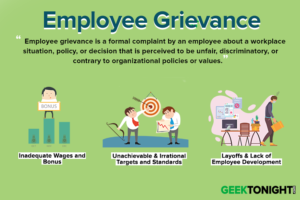Trompenaars Model of Organisational Culture
The Trompenaars model of organizational culture is a framework that was developed by Fons Trompenaars and Charles Hampden-Turner in the 1990s. It is a tool used to help individuals and organizations understand their cultural values and how they affect behavior in the workplace.
Table of Content
Fons Trompenaars is a Dutch author and consultant in the field of cross-cultural communication. He identified four discrete organisational cultures in his thesis ‘Riding the Waves of Culture’.
As you can see in the Figure, Trompenaars’ model of organisational culture is based on two axes: the horizontal axis and the vertical axis. On the horizontal axis is an estimate of whether a culture is person-oriented, or task-oriented.
On the vertical axis is an estimate of whether a culture is hierarchical or egalitarian. The model is used for identifying tensions between organizations with different dominant cultures.
The model is divided into four quadrants or typologies of organizational culture:
Guided Missile
When a task-oriented culture is combined with an egalitarian culture, it is known as a ‘guided missile’. A guided missile organizational culture is characterized by strategy, management by objectives, and performance-related rewards.
This type of culture is guided by vision, values, and mission. A guided missile culture is prevalent in large pharma companies. However, critics have pointed out that the guided missile does not give importance to the person or have much respect for authority.
Eiffel Tower
It is a combination of task-oriented and hierarchical cultures. The unique characteristics of the Eiffel tower culture are structure, management by job description, and expertise.
In the Eiffel tower culture, a division of labor is performed bureaucratically, wherein all roles and responsibilities are defined in advance. This type of culture is practiced in government organizations where status and hierarchy are of prime importance.
Family
A combination of the hierarchy and person-orientated cultures is known as ‘family’. This is a power-oriented culture and is commonly found in organizations operating in Latin, Asian, and African nations. Its main characteristics are the network, who all you know, management by subjective, and respect for authority.
This type of model is prominent in family-owned businesses. Family involvement can sometimes be uncertain but is usually hidden through the commitment and loyalty of a key group of senior executives.
Incubator
The combination of personal and egalitarian orientation cultures is known as the ‘incubator’. It is usually characterized by organized chaos, management by passion, and learning.
The incubator culture is found in new start-up companies. Even small consulting firms and companies in Silicon Valley adopt the incubator culture.
Trompenaars Seven Dimensions of Culture
Trompenaars along with his partners Hampden-Turner developed another model to explain cross-cultural communication in businesses. The model has seven dimensions, which are discussed as follows:
- Universalism Versus Particularism
- Individualism Versus Communitarianism
- Specific Versus Diffuse
- Neutral Versus Emotional
- Achievement Versus Ascription
- Sequential Time Versus Synchronous Time
- Internal Direction Versus Outer Direction
Universalism Versus Particularism
In universal culture societies, high importance is given to rules, laws, and regulations. People in such societies prefer relationships that are based on rules. For example, high universalism is observed in the US and Canada.
On the other hand, in societies where particularism is high, people believe in forming social relations and have no concern for rules. For instance, particularism is observed in Russia.
Individualism Versus Communitarianism
Societies that have individualistic cultures provide freedom to people. The people are empowered to make decisions and are promoters of creativity in such culture. An example of individualistic culture can be seen in the U.K.
However, in a communitarian culture, people like to be in groups and subordinate individual goals to a common good. For example, Japan exhibits a communitarian culture.
Specific Versus Diffuse
In a specific culture, personal and professional lives are kept separate. People prefer to attain their objectives and follow specified rules. For example, Germany exhibits specific culture. On the other hand, people in a diffuse culture like to form bonds in their professional lives too. Examples of diffuse cultures are India and Russia.
Neutral Versus Emotional
In a neutral culture, people find it difficult to express themselves and limit their interactions. For example, U.K. and Sweden are neutral culture countries. In an emotional culture, people have high regard for emotions and are willing to express their feelings.
They also believe in forming a rapport with other people. Italy and France are examples of emotional culture.
Achievement Versus Ascription
In achievement-oriented countries, people focus on achieving goals and rewarding good performance. Here, a person’s position and power are not important.
For example, Canada exhibits an achievement culture. However, in an ascription-oriented culture, people have high concern for position and title. Italy is an example of an ascription culture.
Sequential Time Versus Synchronous Time
In a sequential time culture, high regard is given to events that are planned in a sequence. An example of such a culture is the U.S. On the other hand, in a synchronous time culture, people focus on flexibility and do not lay emphasis on sequential events. Argentina is an example of synchronous culture.
Internal Direction Versus Outer Direction
People in internally directed control cultures focus on self-control as well as on controlling the environment. For example, the U.K and U.S. exhibit internal direction culture. However, in an outer-direction culture, people believe in being c
u_accordion]
[/su_accordion]Human Resources Tutorial
(Click on Topic to Read)







